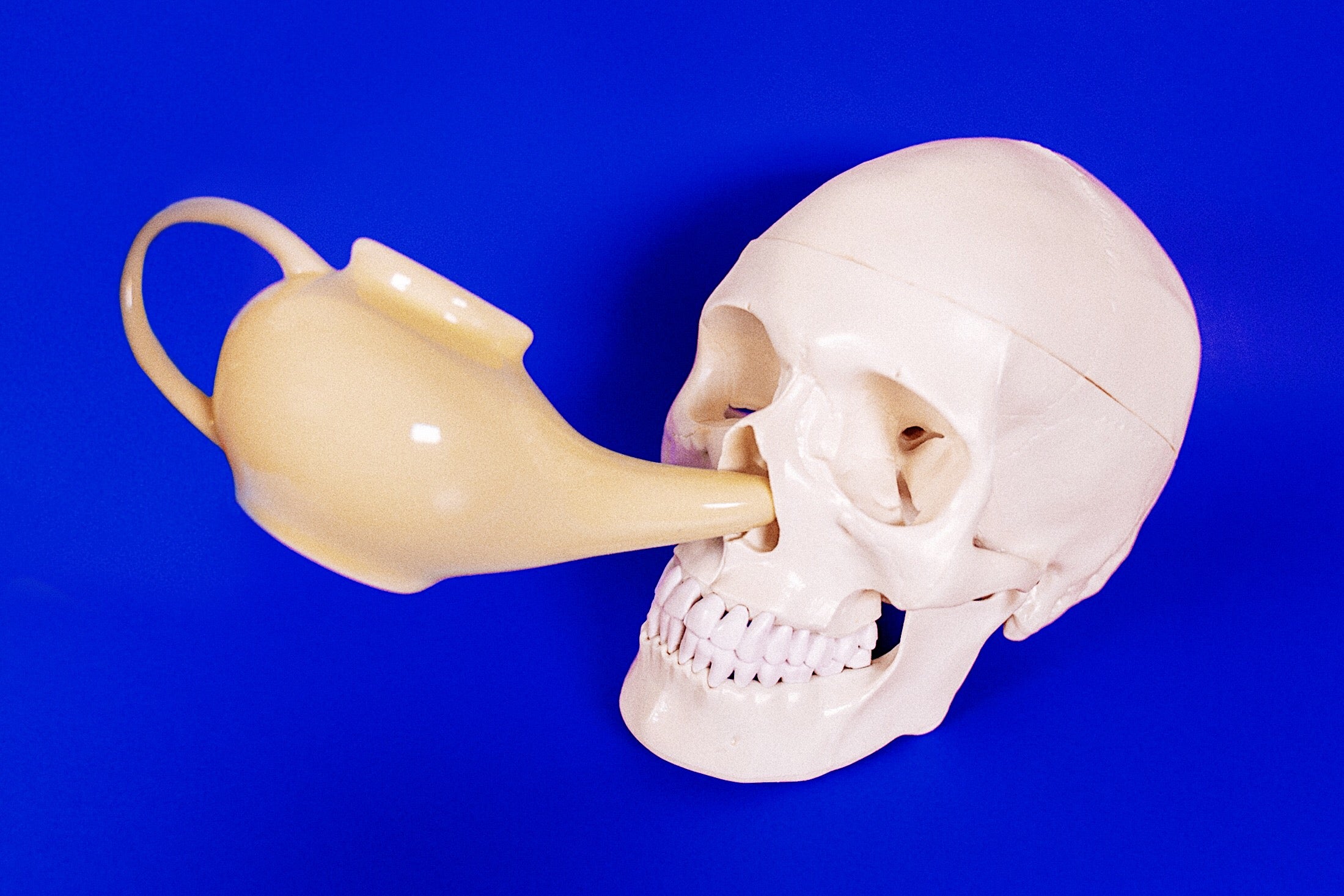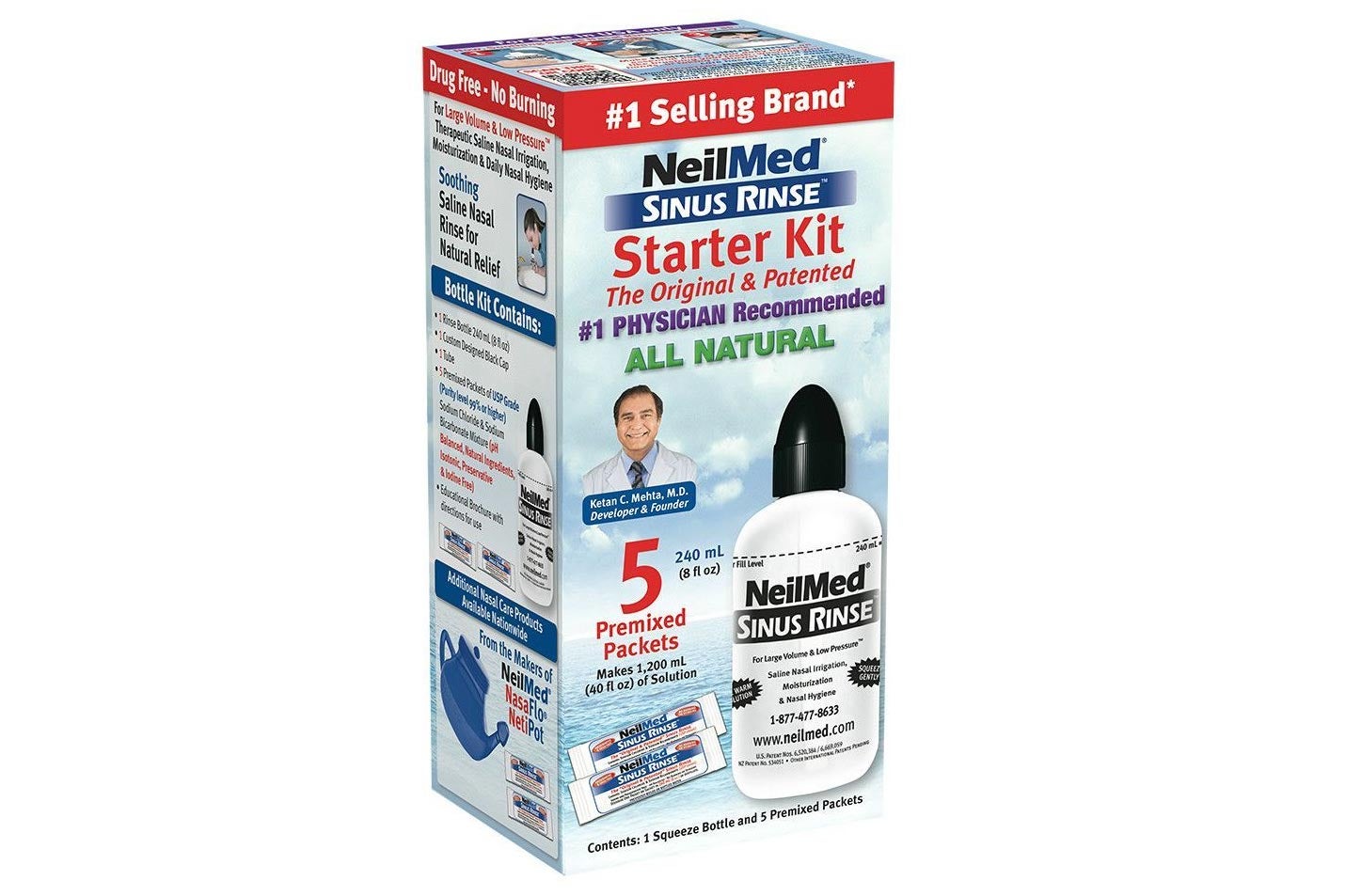Well, Actually is a weekly column by Slate’s Shannon Palus. Each week, she’ll test health and wellness products to help readers figure out what they should try, what they should skip, and why.
Last December, news broke of a woman who died from a rare brain infection. The illness was caused by an amoeba, which, the authors of an article in the International Journal of Infectious Diseases posited, must have entered the woman’s body via her nose. There weren’t many other options—it’s safe to drink these bugs since the stomach destroys them before they enter the blood stream. So why had this woman been snorting water? She’d had a sinus infection, which she’d treated in part with nasal irrigation. The blame for her freakish death fell on the neti pot, even though her tap water was never tested for the Balamuthia mandrillaris that killed her. (It’s also possible to inhale this amoeba, which can be found in soil or dust.)
Nasal irrigation—whether with a neti pot or a specialized squirt bottle—is actually extremely safe. Yet due to a few highly publicized cases over the years, like that of the woman who died above, the devices seem intractably linked to the possibility of coming down with a freak killer illness. But neti pots do not deserve this reputation. They are an easy to use and low-risk, if fairly mild, treatment for everything from the common cold to recurring sinusitis. And it’s very easy to use them safely.
The neti pot is borrowed from traditional Indian medicine and became popular in the U.S. in recent decades alongside yoga. Sales got a boost in the U.S. in 2007 after an Oprah segment featuring Dr. Oz, who suggested that washing the inside of one’s nose was as logical as washing one’s armpits. A case study on media coverage of the practice notes that Kathie Lee Gifford described the neti pot as “nasty and so much fun.” (As that paper points out, Americans love to borrow things from other cultures and then low-key degrade them.)
A neti pot is an oblong vessel with a long spout that you bring to one nostril as you tilt your head to the other side, allowing the contents of your nose to trickle out the other nostril as you flush water in. Other kinds of specialized squirt bottles work too, and can even allow you to squeeze water into your nose without you needing to artfully tip your head.
I grew up irrigating my nose when I had a nasty cold with a nasal aspirator, a round blue-green bulb with a long thin spout (often used to suck snot from baby’s noses), a habit that I’d learned from my parents who got the recommendation from an allergy doctor. (Our particular method involved hanging one’s head off a bed upside down and squirting water in, letting gravity do some of the work.) As a kid, I enjoyed how weirdly satisfying it was. Like so many things our parents teach us—and probably bolstered by the occasional media scare—I stopped doing it when I left the house.
To revisit the practice for this story, I chose the NeilMed Sinus Rinse Starter Kit. It’s easier to get the hang of than a true pot, as I found when I gave feedback on a few styles of neti pot to a former colleague for her guide review (a useful resource to help select a neti pot that’d work well for you). Unlike the nasal bulbs of my youth, it’s clear which is useful because the bulbs and pots can harbor mold if you’re not careful when you clean them.
I placed the order, and then immediately came down with a disgusting cold. Per the instructions, I boiled water for five minutes; this would kill any amoeba that might be lurking in my tap (distilled water works, too). Next, I mixed in one of the salt packets that came with the bottle. Plain water might make your mucous cells swell a little because those cells have some salt, and water likes to even out the salt concentration across a membrane. Then I let it cool, because it’s important to not shoot water hot enough to make tea into one’s body. Once it was cool, I shot the water up my nose while standing over the sink and waited for it to make its way to my gross snot. It pushed some out and made it much easier to blow my nose immediately after. It took a few tries to get right—I was too timid at first to really squeeze—but then wasn’t too difficult. “I quite like the feeling,” says Paul Little, a professor of primary care research at the University of Southampton and author of the most substantial study on nasal irrigation to date.
There’s something interesting about putting water up one side of your nose and having it dribble out the other. It always brings me to the realization that the body is a sort of mysterious system of caves. The trick is especially interesting when the nasal passage is clogged—ah yes, my face is not, in fact, a solid brick of snot. It didn’t work as well to physically remove snot for me as taking pseudoephedrine did, but I found it a nice complement to the medicine. It could also be an alternative to make things feel fresher and clearer when I was stuffy but not under the weather enough to justify popping a Sudafed.
My experience tracks with those of the folks in Little’s study, which involved 671 patients with recurring or chronic sinus issues. He and his team found that those who used neti pots over six months were less likely to reach for over-the-counter medication, too. Their symptoms in general were reduced, and they felt less inclined to go to the doctor for treatment—a visit that could involve unnecessary antibiotics and bolster the ever-terrifying problem of antibiotic resistance. While the neti pot can’t change your anatomy (which is one cause of recurring sinus problems), it can—in addition to make breathing easier by clearing snot—flush out bacteria, Little explains. It was outside the scope of that study, but it’s plausible that regular use could reduce the number of infections someone gets overall. Turns out that Oz’s like-washing-your-armpits comparison wasn’t that far off after all.
NeilMed Sinus Rinse Starter Kit
Time investment: 10 min.
Value: Inexpensive
Effectiveness: Can work well
Delightfulness: Tingly!
Recommendation: Not a cure-all; a nice thing to try
Slate has relationships with various online retailers. If you buy something through our links, Slate may earn an affiliate commission. We update links when possible, but note that deals can expire and all prices are subject to change. All prices were up to date at the time of publication.
There hasn’t been research on the neti pot and the common, one-off cold—how I used it—but there’s no reason not to do it if you feel like it helps, says Little. “It’s simple and cheap. A benign treatment.” Perhaps one reason he finds it so benign is that he’s in the U.K., where brain-eating amoeba aren’t even a problem; when I asked about neti pots and risk of death, he was surprised.
But even here in brain-eating-amoeba America, most people don’t get those infections (commonly due to a strain called Naegleria fowleri) from neti pots; they get them from swimming, and according to the CDC, in one case from a backyard Slip ’N Slide. Just three got the bug from nasal irrigation, making the grand total number of people who are thought to have died from neti pots a whopping four (including the first case mentioned, which involved another kind of amoeba). Still, these are obviously high stakes, so purifying your water by boiling it or grabbing a bottle of the distilled stuff is a necessary and thankfully easy step. For a cleaner, tingly nose, I’ll take it.

